“You’re so darn cute! How do you stand yourself?” I poked the cutest little girl in the nose and she giggled.
“I don’t know, Aunt Susie.”
It was getting late and I still had laundry to fold. Since the complex pool was next to the laundry room, I’d thought it convenient to wash clothes while we swam with our nieces. It was taking a bit longer than I’d planned, what with quality time with family delaying me.
Dear hubby was entertaining the older, challenging niece. So far, so good. I dragged little butt over to him and she climbed onto his shoulders. Her trust was well placed.
“I have to go fold the last load. I’ll try to be quick.”
“No worries,” he said, “We probably leave after this. It’s getting chilly.”
Little girl hollered from his back, “I’m not cold, Uncle Jack!” She was already starting to shiver. Drat! My night would end with clean clothes, in any case.
Halfway through the load, they tumbled inside, the little monkey shivering and blue-lipped, still protesting her departure from liquid fun.
Pulling clothes out of the dryer, I saw in my peripheral vision a little hand come up and then I heard, “What’s that?”
Europeans are more comfortable with their bodies than Americans, in general. At public swimming pools, I’d seen men wearing speedos that hid under their bellies. At least, I assumed they had on swimwear. My husband would tease that such a man hadn’t seen his little friend in a long time.
He’d compromised on swimwear, debating his usual speedos and baggy American-style swimtrunks, at last choosing a fitted pair of shorts, basically Americanized speedos.
Little niece poked him indelicately in the crotch and asked him a basic anatomy question.
A lowing sound poured out of his mouth before he turned and walked all the way up to the wall.
Our older niece then asked, “What’s what?” I couldn’t stop laughing to tell her, and likely would have walked around her question anyway.
The man pulled himself together and rejoined us.
Taking a deep breath, I let him know, “You were warned.”
And then…
The cutest little niece answered her cousin’s question, “I’m talking about that,” and poked his crotch again. My husband fell to the floor and curled up, lowing like a lost calf.
The older, but not so much wiser, niece and I laughed until we couldn’t breathe.
Little muffin stomped her foot and yelled, “Why is everyone laughing?”
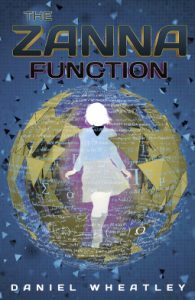 Zanna is accepted into the St. Pommeroy’s School for Gifted Children, where she learns that she is a Scientist, who can bend the rules of physics. A mysterious woman attempts to prevent her from attending the school, and Zanna must draw upon her new abilities, resources, and friends to fight her. The secret she discovers about the woman must be setting Zanna’s story up for a series.
Zanna is accepted into the St. Pommeroy’s School for Gifted Children, where she learns that she is a Scientist, who can bend the rules of physics. A mysterious woman attempts to prevent her from attending the school, and Zanna must draw upon her new abilities, resources, and friends to fight her. The secret she discovers about the woman must be setting Zanna’s story up for a series. Rupi Kaur divided her poetry collection into five sections. Wilting begins…on the last day of love…my heart cracked inside my body…and continues this part of the story throughout the following poems. Falling exposes the self in an introspection of negativity, moving from grief to the numbness of sudden aloneness. Rooting reaches the stage of connecting with community, recognizing pain and fear, power and strength on a larger scale. Rising expands and contract the self, bringing the strength inward…i will welcome…a partner…who is my equal…celebrating the self and being proud of ancestry. Blooming shares the fruits of the labors of those who have gone before…i am the first woman in my lineage with freedom of choice…praising her parents’ decision to immigrate and allow daughters to fully become themselves. Kaur’s poetry has been derided for being so accessible to the masses, which is a shame, because what then is the point of exclusivity of art…
Rupi Kaur divided her poetry collection into five sections. Wilting begins…on the last day of love…my heart cracked inside my body…and continues this part of the story throughout the following poems. Falling exposes the self in an introspection of negativity, moving from grief to the numbness of sudden aloneness. Rooting reaches the stage of connecting with community, recognizing pain and fear, power and strength on a larger scale. Rising expands and contract the self, bringing the strength inward…i will welcome…a partner…who is my equal…celebrating the self and being proud of ancestry. Blooming shares the fruits of the labors of those who have gone before…i am the first woman in my lineage with freedom of choice…praising her parents’ decision to immigrate and allow daughters to fully become themselves. Kaur’s poetry has been derided for being so accessible to the masses, which is a shame, because what then is the point of exclusivity of art…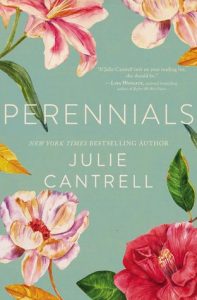 Lovey allows herself to be chased from her childhood home in Oxford, Mississipi by her older sister Bitsy’s inexplicable animosity. Though she calls foul on sibling rivalry, her parents don’t back her up, making Lovey feel damaged. When their mother’s garden shed burns to the ground after their friends Fisher and Finn barely make it out, Bitsy blames Lovey and no one protests, leaving her alone for years wallowing in the injustice. Bitsy uses Finn’s injuries to fuel Lovey’s guilt, prompting her move to another state, another life, away from his brother Fisher, who asked Lovey to marry him. Emotions run rampant through Lovey as she tries to balance her current life and the one she ran scared from decades ago. Her parents convince her to return home for their 50th wedding anniversary party. She complies, facing her lost love and antagonistic sister. When she’s called to return to work to resolve a hostile takeover by the boss of her ad campaign project, her father changes her mind when he confesses that her mother is terminally ill. She stays, determined to treasure every last moment with her mother, making a truce with her sister, and dealing haphazardly with Fisher’s current “it’s complicated” relationship status. Lovey continues to bond with her mother over their shared love of gardening, with life lessons inspired by gardening and favorite local writers Welty and Faulkner sprinkled throughout the book by both parents. Religious themes run a bit strong in this story and can be distracting, assuming that readers are Christian and accepting of religiosity as part of the lessons. Lovey makes a breakthrough with her father after a particularly hurtful encounter with Bitsy, which starts her healing process. She is home. This is her home. Everything comes together, albeit some of it a bit too easily, as there are decades of pent-up hurt to be worked through, especially for the sisters.
Lovey allows herself to be chased from her childhood home in Oxford, Mississipi by her older sister Bitsy’s inexplicable animosity. Though she calls foul on sibling rivalry, her parents don’t back her up, making Lovey feel damaged. When their mother’s garden shed burns to the ground after their friends Fisher and Finn barely make it out, Bitsy blames Lovey and no one protests, leaving her alone for years wallowing in the injustice. Bitsy uses Finn’s injuries to fuel Lovey’s guilt, prompting her move to another state, another life, away from his brother Fisher, who asked Lovey to marry him. Emotions run rampant through Lovey as she tries to balance her current life and the one she ran scared from decades ago. Her parents convince her to return home for their 50th wedding anniversary party. She complies, facing her lost love and antagonistic sister. When she’s called to return to work to resolve a hostile takeover by the boss of her ad campaign project, her father changes her mind when he confesses that her mother is terminally ill. She stays, determined to treasure every last moment with her mother, making a truce with her sister, and dealing haphazardly with Fisher’s current “it’s complicated” relationship status. Lovey continues to bond with her mother over their shared love of gardening, with life lessons inspired by gardening and favorite local writers Welty and Faulkner sprinkled throughout the book by both parents. Religious themes run a bit strong in this story and can be distracting, assuming that readers are Christian and accepting of religiosity as part of the lessons. Lovey makes a breakthrough with her father after a particularly hurtful encounter with Bitsy, which starts her healing process. She is home. This is her home. Everything comes together, albeit some of it a bit too easily, as there are decades of pent-up hurt to be worked through, especially for the sisters.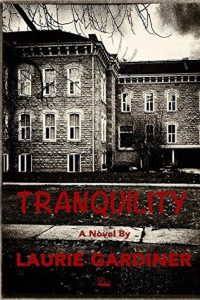 Single mom Sarah starts day shift in the dementia ward of the healthcare facility Tranquilty, moving from nights in palliative care. Her new co-worker Tracey immediately befriends her, introducing her to the “cast of characters” for whom she will be caring: Sam, who randomly prefers nudity, gentle, inquisitive Rose, the bickering twins Lily and Beth, the wheelchair menace Mrs. W, who remembers a concentration camp more vividly than contemporary events, quiet Mrs. Sellers, Italian immigrant Mrs. Gallo, whose husband visits her daily, Alfred, who has a tendency to call for a once beloved cat named Hairball, and Mrs. Amaral, a sweet Portuguese immigrant. Gardiner’s work in such a facility inspired the story, and to ensure accuracy, her research included interviewing employees in all areas of the facility, from bathing to housekeeping. New residents to Tranquility bring a professional dilemma, a dangerous situation, and potential romance for Sarah. Edie, with her soft Scottish brogue, does not appear to be suffering from dementia, but when she fakes it to expose an abusive employee, Sarah keeps an eye on her. After two violent incidents, endangering staff and residents, John is quickly moved again, to the psych ward. With Georgia comes a big family, including her great-grandson Jay, who lights a fire in Sarah. Along with all this, Sarah’s own grandma suffers a second stroke, and her mother must deal with end of life choices, a struggle for a woman who hasn’t really gotten over her husband’s death a decade earlier. The brightest light in this story is Kayla, Sarah’s daughter, who gives her grandma life, and handles great-grandma’s struggle with surprising grace for a 4-year-old. Sarah and Tracey execute a not-quite-legal plan to prove the co-worker’s abuse, but it’s waylaid by Edie’s plan to do the same. Everything comes together in the end in a complicated, bittersweet resolution, just like in real life. Characters learn and grow, while others astonish, but most of all, the ones who need to find themselves do so.
Single mom Sarah starts day shift in the dementia ward of the healthcare facility Tranquilty, moving from nights in palliative care. Her new co-worker Tracey immediately befriends her, introducing her to the “cast of characters” for whom she will be caring: Sam, who randomly prefers nudity, gentle, inquisitive Rose, the bickering twins Lily and Beth, the wheelchair menace Mrs. W, who remembers a concentration camp more vividly than contemporary events, quiet Mrs. Sellers, Italian immigrant Mrs. Gallo, whose husband visits her daily, Alfred, who has a tendency to call for a once beloved cat named Hairball, and Mrs. Amaral, a sweet Portuguese immigrant. Gardiner’s work in such a facility inspired the story, and to ensure accuracy, her research included interviewing employees in all areas of the facility, from bathing to housekeeping. New residents to Tranquility bring a professional dilemma, a dangerous situation, and potential romance for Sarah. Edie, with her soft Scottish brogue, does not appear to be suffering from dementia, but when she fakes it to expose an abusive employee, Sarah keeps an eye on her. After two violent incidents, endangering staff and residents, John is quickly moved again, to the psych ward. With Georgia comes a big family, including her great-grandson Jay, who lights a fire in Sarah. Along with all this, Sarah’s own grandma suffers a second stroke, and her mother must deal with end of life choices, a struggle for a woman who hasn’t really gotten over her husband’s death a decade earlier. The brightest light in this story is Kayla, Sarah’s daughter, who gives her grandma life, and handles great-grandma’s struggle with surprising grace for a 4-year-old. Sarah and Tracey execute a not-quite-legal plan to prove the co-worker’s abuse, but it’s waylaid by Edie’s plan to do the same. Everything comes together in the end in a complicated, bittersweet resolution, just like in real life. Characters learn and grow, while others astonish, but most of all, the ones who need to find themselves do so.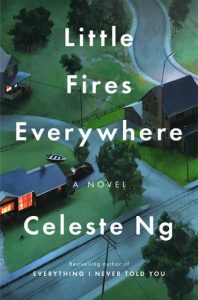 Photography artist Mia Warren moves to Shaker Heights, OH, bringing a new element into the staunchly middle-class, by the rules neighborhood, changing dynamics of two families, her own as a single mom, and her landlady Elena Richardson’s properly planned one as third generation Shaker Heights. Into this volatile blend is thrown teenage hormones, a King Solomon dilemma, and outside the box thinkers, culminating in “something’s gotta give.” Wisdom comes from unlikely sources.
Photography artist Mia Warren moves to Shaker Heights, OH, bringing a new element into the staunchly middle-class, by the rules neighborhood, changing dynamics of two families, her own as a single mom, and her landlady Elena Richardson’s properly planned one as third generation Shaker Heights. Into this volatile blend is thrown teenage hormones, a King Solomon dilemma, and outside the box thinkers, culminating in “something’s gotta give.” Wisdom comes from unlikely sources.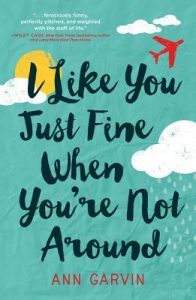 Tig Monahan just put her mother into a home, lost a boyfriend to Hawaii, and gained a newborn from a runaway sister. After leaving her job for the boyfriend who leaves her, Tig falls into the position of radio psychology host, where she blossoms, but also learns a harsh lesson about the limitations of radio. She must find herself to put her life back in order, and let go of trying to control everything and everyone. When she finally opens up, her family relations, romance, and friendships fuel her rather than burden her.
Tig Monahan just put her mother into a home, lost a boyfriend to Hawaii, and gained a newborn from a runaway sister. After leaving her job for the boyfriend who leaves her, Tig falls into the position of radio psychology host, where she blossoms, but also learns a harsh lesson about the limitations of radio. She must find herself to put her life back in order, and let go of trying to control everything and everyone. When she finally opens up, her family relations, romance, and friendships fuel her rather than burden her.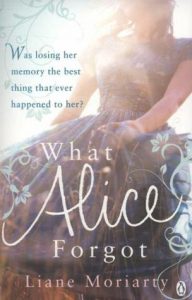 Alice wakes from a daydream of the beach to a painful head in an unfamiliar gym, with a colleague peering down at her. She fell off her bike in spin class and misplaced the last decade in her brain. Current events are not so current, and Alice learns some astonishing facts about the world and popular culture. Over the following week, she discovers some harsh truths about that decade from family, friends, and neighbors. As she slowly gains insight into her own life and troubled relations with her loved ones, the soul searching begins. When the memories hit all at once, Alice is stunned and reasserts herself as she merges her 29-year-old self with her 39-year old self.
Alice wakes from a daydream of the beach to a painful head in an unfamiliar gym, with a colleague peering down at her. She fell off her bike in spin class and misplaced the last decade in her brain. Current events are not so current, and Alice learns some astonishing facts about the world and popular culture. Over the following week, she discovers some harsh truths about that decade from family, friends, and neighbors. As she slowly gains insight into her own life and troubled relations with her loved ones, the soul searching begins. When the memories hit all at once, Alice is stunned and reasserts herself as she merges her 29-year-old self with her 39-year old self.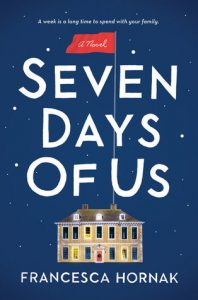 A young doctor assisting in the Haag virus epidemic in Liberia brings home to her British nuclear family (mom, dad, sister) a week quarantine in their country home for Christmas. Secrets burst forth in the form of quarantine gatecrashers, long repressed feelings, and past indiscretions, transforming alliances and long-held opinions. Ultimately, they are closer after a life-changing event in the home.
A young doctor assisting in the Haag virus epidemic in Liberia brings home to her British nuclear family (mom, dad, sister) a week quarantine in their country home for Christmas. Secrets burst forth in the form of quarantine gatecrashers, long repressed feelings, and past indiscretions, transforming alliances and long-held opinions. Ultimately, they are closer after a life-changing event in the home.